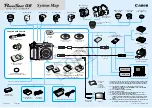
© National Instruments
|
7-1
7
Ethernet Ports
This chapter provides information about the Ethernet ports and Ethernet LEDs on the NI Smart
Camera and considerations for assigning an IP address.
The Ethernet ports on the smart camera provide a connection between the smart camera and
the development computer or other network devices. The smart camera provides two
10/100/1,000 Mbps Ethernet ports. Figure 7-2 shows the Ethernet ports on the smart camera.
Figure 7-1.
NI Smart Camera Ethernet Ports
Port 1 is the primary port and port 2 is the secondary port. The primary port can be configured
to acquire an IP address from a DHCP server. The secondary port can only be configured for a
static IP address.
Both Ethernet ports of the smart camera can connect to a 10, 100, or 1,000 Mbps (1 Gbps)
Ethernet network at either full or half duplex. The smart camera automatically detects the speed
and duplex capabilities of its link partner and configures for the fastest common interface. The
smart camera can also perform auto-crossover, allowing the use of straight or crossover Ethernet
cables, independent of the connection configuration.
When shielded Ethernet cables are being used, ensure that the shields on the Ethernet cables and
the POWER-I/O cable do not contact each other to maintain full Ethernet signal integrity.
Note
A CAT 5e or CAT 6 1000Base-T Ethernet cable is required to achieve
maximum 1,000 Mbps (Gigabit) Ethernet performance. CAT 5e and CAT 6 Ethernet
cables adhere to higher electrical standards required for Gigabit Ethernet
communication. CAT 5 cables are not guaranteed to meet necessary electrical
requirements. While CAT 5 cables may appear to work in some installations at
1,000 Mbps, CAT 5 cables are likely to cause increased bit errors resulting in
degraded or unreliable network performance.
1
Port 1
2
Port 2
1
2
1
2
















































